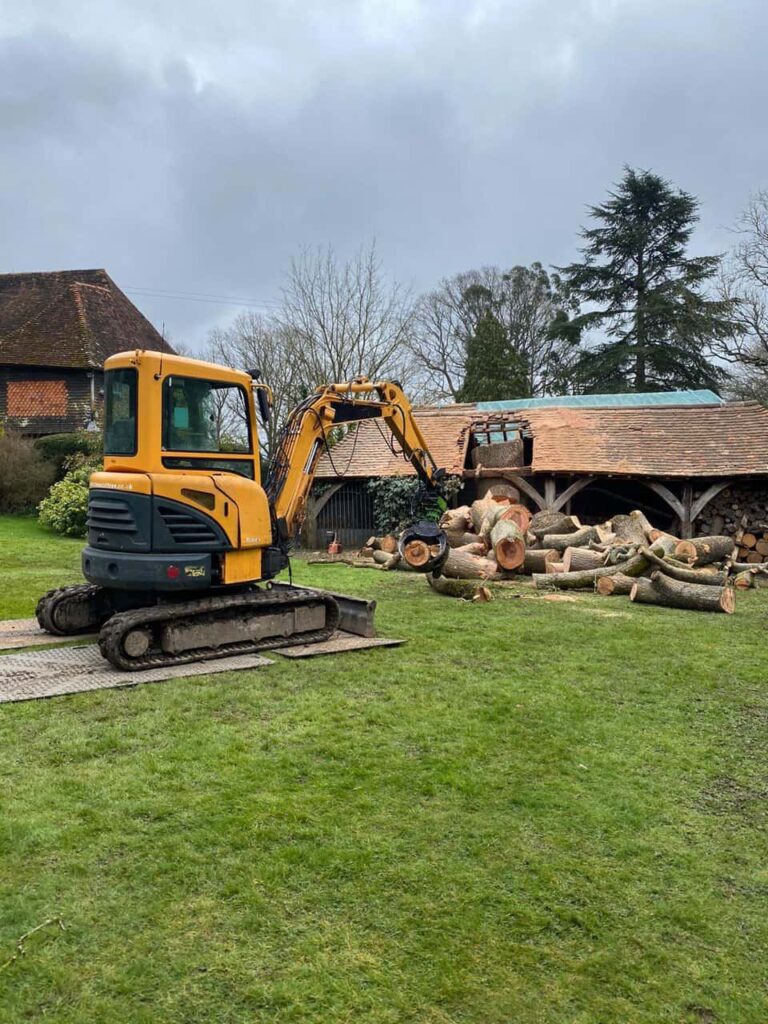Tree Reshaping for Privacy: Creating Natural Screens
Introduction: In our fast-paced world, privacy is a precious commodity. The need for seclusion and tranquillity within our homes and outdoor spaces has led to innovative solutions for privacy, including using trees as natural screens. Tree reshaping for privacy enhances your property’s seclusion and brings the beauty of nature to your surroundings. In this blog post, St Neots Tree Surgeons will explore the art of creating natural screens through tree reshaping and its benefits for homeowners.
Why Choose Natural Screens?
Natural screens offer numerous advantages over traditional privacy solutions like fences or walls:
- Aesthetic Appeal: Trees provide an organic and visually pleasing alternative to man-made structures, enhancing the overall beauty of your landscape.
- Eco-Friendly: Trees are environmentally friendly, contributing to oxygen production and wildlife habitat, reducing noise pollution and providing shade.
- Seasonal Charm: Different tree species offer seasonal changes in colour, foliage, and fruit, providing year-round interest and beauty.
- Cost-Effective: Once established, trees require minimal maintenance compared to regular upkeep and potential repair or replacement of fences or walls.
- Adaptability: Trees can be tailored to your privacy needs and grow to different heights and shapes to suit your landscape design.
Selecting the Right Trees
Choosing the right trees for your natural screen is crucial to achieving your privacy goals. Consider these factors:
- Evergreen vs. Deciduous: Evergreen trees maintain their foliage throughout the year, offering consistent privacy, while deciduous trees provide seasonal variation and may be more suitable for certain climates.
- Height: Determine the desired height of your screen and select tree species that can achieve that height while thriving in your local climate.
- Growth Rate: Some trees grow faster than others. Consider how quickly you want your privacy screen to mature when selecting tree species.
- Space and Soil: Ensure that you have enough space for your selected trees to grow to their full potential and that your soil conditions suit their growth.
Tree Reshaping Techniques
To create an effective privacy screen, tree reshaping techniques play a vital role:
- Pruning: Regular pruning helps shape the tree’s canopy to encourage dense growth, essential for effective screening.
- Thinning: Thinning involves removing selected branches to improve air circulation and allow sunlight to reach the inner foliage, promoting healthy growth.
- Topping: Topping should be done judiciously and by professionals, as it can negatively impact a tree’s health if not performed correctly.
- Training: Training the tree’s branches to grow in a specific direction or shape helps create the desired screening effect.
- Maintenance: Regular maintenance ensures your privacy screen remains dense, healthy, and visually appealing.
Conclusion: Tree reshaping for privacy offers homeowners a beautiful and sustainable solution for enhancing their outdoor spaces while maintaining seclusion. By selecting the right tree species and employing proper reshaping techniques, you can create a natural screen that not only adds privacy but also contributes to your landscape’s beauty and ecological value.
Call us on: 01480 776 299
Click here to find out more about St Neots Tree Surgeons
Click here to complete our contact form and see how we can help with your tree’s needs.

